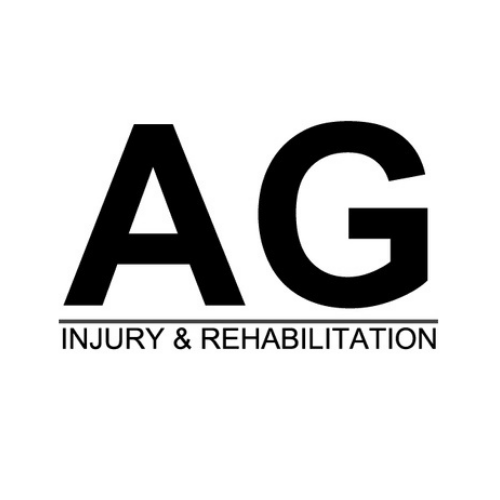Shoulder injuries and pain can be not only excruciating but also incredibly debilitating, affecting our ability to perform even the most basic daily tasks. Whether you're an avid athlete, a dedicated fitness enthusiast, or someone who simply wants to maintain a pain-free and functional upper body, understanding how to prevent shoulder injuries is paramount.
In this comprehensive guide, I'll delve into the world of shoulder health and explore the best exercises designed to strengthen, stabilize, and protect this vital joint. Whether you're a seasoned gym-goer or just starting your fitness journey, the knowledge and exercises shared here can help you safeguard your shoulders against potential injuries and maintain a pain-free range of motion.
Join us as we uncover the key exercises that can make all the difference in keeping your shoulders strong and resilient. Say goodbye to those nagging aches and pains, and hello to a healthier, happier shoulder complex. Let's get started on the path to pain-free shoulders and a better quality of life!
Anatomy of the shoulder joint
Before we delve into the world of shoulder injuries, it's essential to have a basic understanding of the intricate shoulder anatomy. We'll break down the key components of the shoulder joint, including bones, ligaments, tendons, and muscles, to provide a solid foundation for understanding how injuries can occur.
The shoulder joint, also known as the glenohumeral joint, is a complex and highly mobile joint that allows for a wide range of arm movements. It consists of several key components. The head of the upper arm bone, known as the humerus, forms the ball of the joint, while the shallow socket in the shoulder blade, called the glenoid, acts as the socket. To provide stability and support, a rim of fibrous cartilage known as the labrum surrounds the glenoid. Ligaments, tendons, and muscles play vital roles in shoulder function. Ligaments connect bone to bone, stabilizing the joint, while tendons connect muscles to bone, facilitating movement. The rotator cuff, a group of four muscles and their tendons, plays a crucial role in maintaining shoulder stability and enabling various arm motions. Together, this intricate network of bones, cartilage, ligaments, tendons, and muscles allows the shoulder to perform a remarkable range of activities, from lifting and reaching to rotating and swinging.
The Rotator Cuff
The rotator cuff muscles play a pivotal role in maintaining shoulder stability and functionality. Comprised of four muscles—the supraspinatus, infraspinatus, teres minor, and subscapularis—along with their associated tendons, the rotator cuff encircles the shoulder joint like a cuff, hence its name. Its primary function is to stabilize the head of the humerus (upper arm bone) within the shallow glenoid socket of the shoulder blade during movement. This stability is vital for preventing dislocations and ensuring the smooth, coordinated motion of the shoulder. Additionally, the rotator cuff muscles work together to initiate and control various arm movements, such as lifting, rotating, and raising the arm overhead. In essence, the rotator cuff serves as the dynamic support system for the shoulder, enabling both everyday activities and more strenuous tasks while minimizing the risk of injury and maintaining shoulder health.
Common shoulder injuries
In this section, we'll explore the various shoulder injuries that frequently plague individuals of all ages and lifestyles. From the notorious rotator cuff tears to the elusive frozen shoulder, we'll shed light on the signs, symptoms, and causes of each condition. You'll gain a comprehensive understanding of what's happening inside the joint when your shoulder injury strikes. Shoulder injuries seldom occur out of the blue. There are often underlying factors and habits that contribute to these problems. We'll discuss the common risk factors, such as age, overuse, and poor posture, and how they can lead to shoulder injuries. Recognizing these triggers is the first step toward prevention. The best way to deal with shoulder injuries is to prevent them from happening in the first place. In this section, we'll provide you with practical tips and exercises to help you safeguard your shoulder health. We'll also touch on treatment options, from rest and physical therapy to surgical interventions, for those already grappling with shoulder discomfort.
Several common shoulder injuries can afflict individuals of all ages and activity levels. These injuries include:
-
Rotator Cuff Tear: These occur when one or more of the rotator cuff tendons become torn, often due to overuse, aging, or traumatic events. Rotator cuff tears can lead to pain and limited shoulder mobility.
-
Frozen Shoulder (Adhesive Capsulitis): This condition involves the thickening and tightening of the shoulder joint's capsule, causing stiffness and reduced range of motion. Frozen shoulder typically progresses through stages of pain and restriction before gradually improving.
-
Shoulder Impingement Syndrome: Repetitive overhead motions or poor posture can lead to the impingement of tendons and bursa in the shoulder, resulting in pain, inflammation, and reduced function.
-
Labral Tears: The labrum is a ring of cartilage that surrounds the glenoid (shoulder socket). Tears in this structure, often caused by trauma or overuse, can lead to instability and discomfort.
-
Bursitis: Inflammation of the bursa sacs that cushion the shoulder joint can result from repetitive motion or acute trauma. Bursitis can cause pain, swelling, and limited shoulder mobility.
-
Tendinitis: Tendinitis refers to inflammation of a tendon, often due to overuse or sudden stress. In the shoulder, tendinitis commonly affects the biceps and the tendons of the rotator cuff.
-
Fractures and Dislocations: Traumatic events or falls can lead to shoulder fractures or dislocations, which can cause severe pain, deformity, and instability.
-
SLAP Tears: SLAP (Superior Labrum Anterior to Posterior) tears involve the labrum at the front of the shoulder socket. These injuries are often seen in athletes who perform repetitive overhead motions.
Understanding these common shoulder injuries is the first step in prevention and timely treatment, which can help individuals maintain optimal shoulder health and function.
The best shoulder exercises to prevent shoulder problems
The following simple strengthening exercises performed regularly can have a surprisingly big effect on daily activities an improve the quality of your everyday life, even in the early stages of an exercise programme. By strengthening the important muscles in your shoulder and targeting the main muscle groups like the rotator cuff, deltoid and scapular muscles; your shoulder muscles help regulate the movement patterns of your shoulder and play a large role in injury prevention.
-
Shoulder Blade Squeezes: Stand or sit up straight and squeeze your shoulder blades together, then relax. Repeat this motion to improve posture and shoulder stability.
-
External Rotation with Resistance Band: Attach a resistance band to a fixed point, hold the other end, and rotate your arm outward while keeping your elbow close to your body.
-
Internal Rotation with Resistance Band: Similar to external rotation, but rotate your arm inward against resistance to balance shoulder strength.
-
Y-Raises: Lie face-down on an incline bench or an exercise ball and raise your arms in a Y-shape. This strengthens your upper back and shoulders.
-
Face Pulls: Using a resistance band or cable machine, pull the rope or band towards your face while retracting your shoulder blades.
-
Scapular Push-Ups: In a push-up position, keep your arms straight and retract your shoulder blades to raise your upper body slightly. It helps stabilize the shoulders.
-
Prone I's, T's, and Y's: Lie face-down and lift your arms in the shape of I, T, and Y. This targets different areas of the shoulder, your posterior deltoid and upper back.
-
Dumbbell Lateral Raises: Hold dumbbells at your sides and lift them to shoulder height. This exercise strengthens the lateral deltoids. Always start with light dumbbells using high reps before progressing to heavier weights.
-
Dumbbell Front Raises: Similar to lateral raises, but raise the dumbbells in front of your body to target the front deltoids.
-
Face Pulls: Attach a rope or band to a high point and pull it towards your face while retracting your shoulder blades. This exercise helps improve posture and shoulder stability.
Don't forget to warm up with appropriate weights and consult a fitness professional or physical therapist if you're unsure about proper form or if you have any existing shoulder issues.
Remember, the most effective exercises for an injured shoulder target the causes of shoulder pain rather than jut the symptoms. This could be as simple as developing a good range of motion at the joint to ensure it is mobile enough to deal with the demands of every day life, and then progressing from there; rather than just addressing the pain through acute pain management.
Incorporating strength training exercises into your fitness routine can be a highly effective strategy for preventing shoulder injuries. By targeting the muscles surrounding the shoulder joint, these exercises help improve stability, balance, and overall shoulder strength. A well-rounded strength training program not only enhances the performance of daily activities but also reinforces the integrity of the shoulder joint, reducing the risk of injuries associated with overuse or strain. However, it is crucial to perform these exercises with proper form, gradually increase weights, and seek guidance from fitness professionals or physical therapists to ensure a safe and effective prevention approach. Ultimately, proactive shoulder strength training can pave the way for a healthier and more resilient shoulder complex, enabling individuals to enjoy an active lifestyle with reduced risk of injury.

